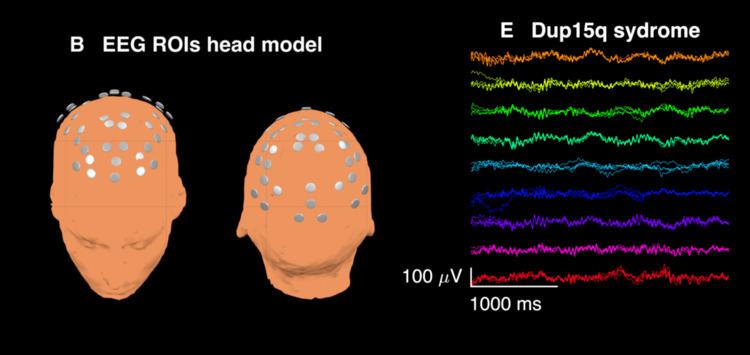 | ||
Beta wave, or beta rhythm, is the term used to designate the frequency range of human brain activity between 12.5 and 30 Hz (12.5 to 30 transitions or cycles per second). Beta waves can be split into three sections: Low Beta Waves (12.5–16 Hz, "Beta 1 power"); Beta Waves (16.5–20 Hz, "Beta 2 power"); and High Beta Waves (20.5–28 Hz, "Beta 3 power"). Beta states are the states associated with normal waking consciousness.
Contents
History
Beta waves were discovered and named by the German psychiatrist Hans Berger, who invented electroencephalography (EEG) in 1924 as a method of recording electrical brain activity from the human scalp. Berger termed the larger amplitude, slower frequency waves that appeared over the posterior scalp when the subject's eye were closed alpha waves. The smaller amplitude, faster frequency waves that replaced alpha waves when the subject opened his or her eyes were then termed beta waves.
Function
Low amplitude beta waves with multiple and varying frequencies are often associated with active, busy or anxious thinking and active concentration.
Over the motor cortex beta waves are associated with the muscle contractions that happen in isotonic movements and are suppressed prior to and during movement changes. Bursts of beta activity are associated with a strengthening of sensory feedback in static motor control and reduced when there is movement change. Beta activity is increased when movement has to be resisted or voluntarily suppressed. The artificial induction of increased beta waves over the motor cortex by a form of electrical stimulation called Transcranial alternating-current stimulation consistent with its link to isotonic contraction produces a slowing of motor movements.
Relationship with GABA
Beta waves are often considered indicative of inhibitory cortical transmission mediated by gamma aminobutyric acid (GABA), the principal inhibitory neurotransmitter of the mammalian nervous system. Benzodiazepines, drugs that modulate GABAA receptors, induce beta waves in EEG recordings from humans and rats. Spontaneous beta waves are also observed diffusely in scalp EEG recordings from children with duplication 15q11.2-q13.1 syndrome (Dup15q) who have duplications of GABAA receptor subunit genes GABRA5, GABRB3, and GABRG3. For this reason, it is possible that, in certain clinical contexts, beta waves could be a general biomarker of GABAA receptor gene overexpression or otherwise aberrant GABAergic transmission.
